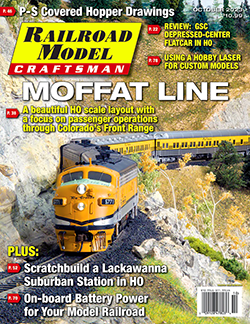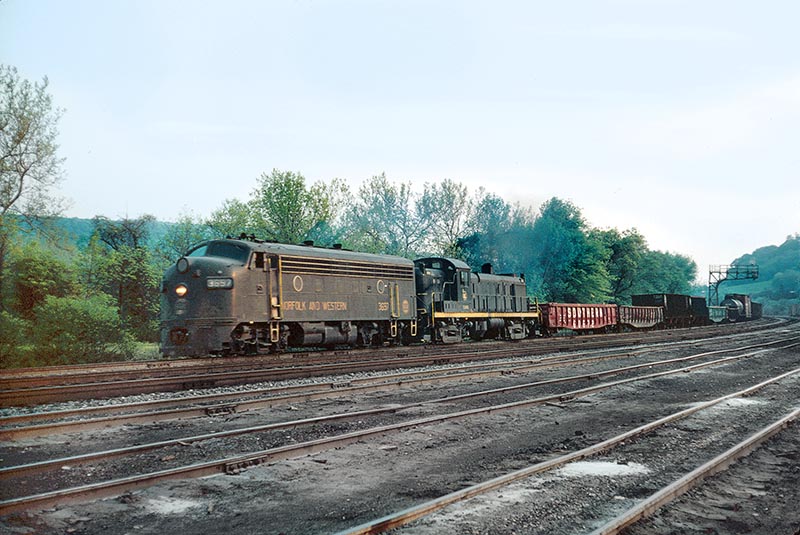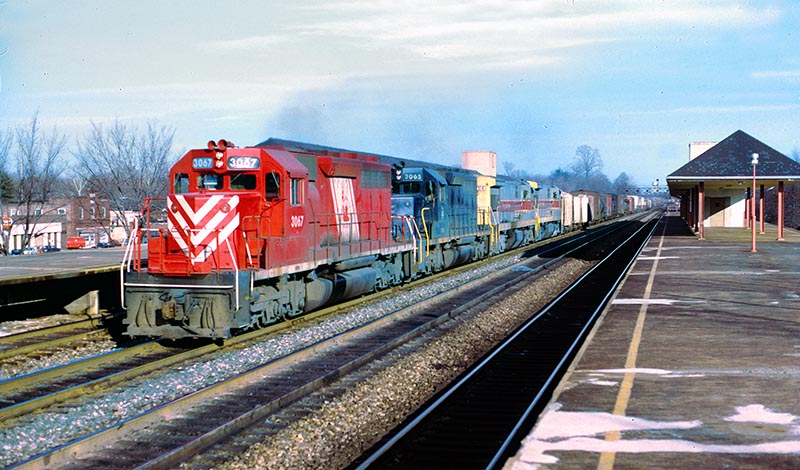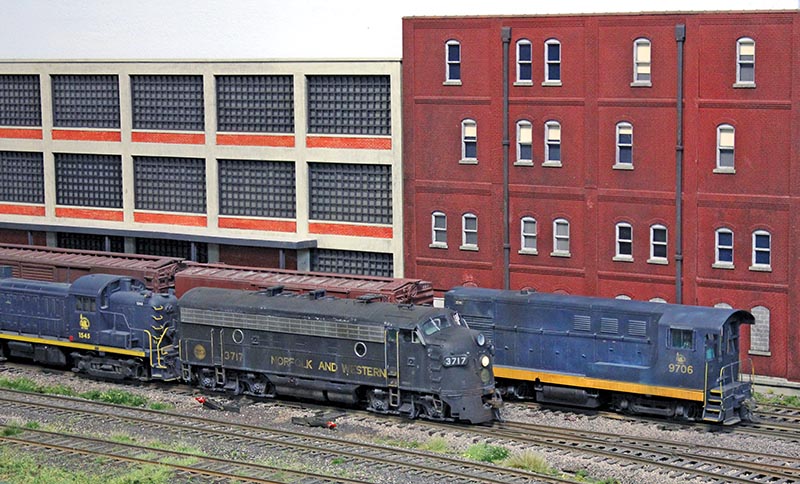 by Jim Homoki/photos by the author except as noted
by Jim Homoki/photos by the author except as noted
The extensive use of “foreign” power — meaning locomotives from other railroads, not other countries — on the Central Railroad of New Jersey (CNJ) in the early 1970s is one of the reasons I find that prototype so attractive for modeling. In that era, a variety of diesels from other railroads could be found in use either as leased power or leading on jointly operated trains. If you’d like to add some variety and color to your layout, but don’t want to change your primary modeling subject, all you have to do is dig a little into your chosen prototype’s history.
There are numerous reasons why locomotives may appear on a railroad other than their home road. My examples are based on my prototype, but if your favorite railroad did not have any of this variety, freelancing may be the answer. Following prototype practices, plausible scenarios can be developed for “could-have-been” situations. Let’s take a look at several examples of why locomotives may appear on a railroad other than its home road.

ABOVE: A leased N&W F7 pitches in on a CNJ freight at Bethlehem, Pa., in June 1971. —Joe Nemeth photo, Anthracite Railroads Historical Society collection
Common Examples
The practice of leasing of locomotives is nearly as old as the railroads themselves. A common example is found where a short line leases a unit or two from the much larger trunk railroad they connect with. This is in the best interest of both railroads to provide for interchange and develop traffic. The situation may be that a new locomotive is still on order and not yet delivered, or the branch line was spun off by the Class I and the new operator has not yet acquired his own power. Sometimes railroads would lease power out during seasonal dips in traffic, so that diesels that would otherwise be parked idle could continue earning money for their owner. Many cases of the latter can be found from the 1970s into the early 2000s.
Jersey Central was operated under bankruptcy from 1967 until its inclusion in Conrail in 1976, and therefore was in a poor position to purchase new locomotives. Leasing power from Baltimore & Ohio (B&O) as well as Norfolk & Western (N&W) helped CNJ meet its power requirements. Making this situation more interesting for modeling is that they tended to be older products from EMD, Fairbanks-Morse, and Baldwin.

ABOVE: A favorite train of CNJ and Erie Lackawanna modelers alike was the “pool” train between Jersey City and Scranton, Pa., designated ES-99 westbound and SE-98 eastbound. It was inaugurated in January 1972 and typically ran with six-axle locomotives. In this view, ES-99 is loaded with large EMD power in the form of EL SD45-2 3678, CNJ SD40 3067, and EL SDP45 3641.
A mix of leased locomotives alongside those owned by CNJ is a common scene on my layout. A variety of elderly switchers worked in the yards and on drills (a term for locals on the CNJ) while more roadworthy locomotives powered the main line freight trains.
In more modern times, leased locomotives often come from sources that are not operating railroads, such as Helm Leasing (HLCX), and Larry’s Truck & Electric (LTEX). There are also manufacturers, financing companies, and other railroads involved in this business. These leases can be short-term or long-term. Seasonal traffic crunches or maintenance issues could also result in the need to lease locomotives.

ABOVE: CNJ SD40 3067 (ex-B&O 7488) leads Train ES-99 through Cranford, N.J., with a second CNJ SD40 and two Erie Lackawanna units in the mix in March 1973. —Walter Schopp photo, ARHS collection
The model of an Oakway leaser is dressed in typical EMD demonstrator colors and represents a unit from the early 1990s. Oakway was the leasing arm of diesel manufacturer Electro-Motive Division (EMD), providing locomotives to a number of railroads, including Conrail.
Another situation where foreign power may appear on your railroad is by granting “trackage rights” to a competing line. Trackage rights are where one company has negotiated the “right” to run their trains over the track of another railroad. Trackage rights may benefit both railroads by reducing their costs over a certain segment, be part of a switching agreement, provide access for several railroads to a common “union” passenger station, or be ordered by the Interstate Commerce Commission (now U.S. Surface Transportation Board) to promote competition as a condition of a merger…



